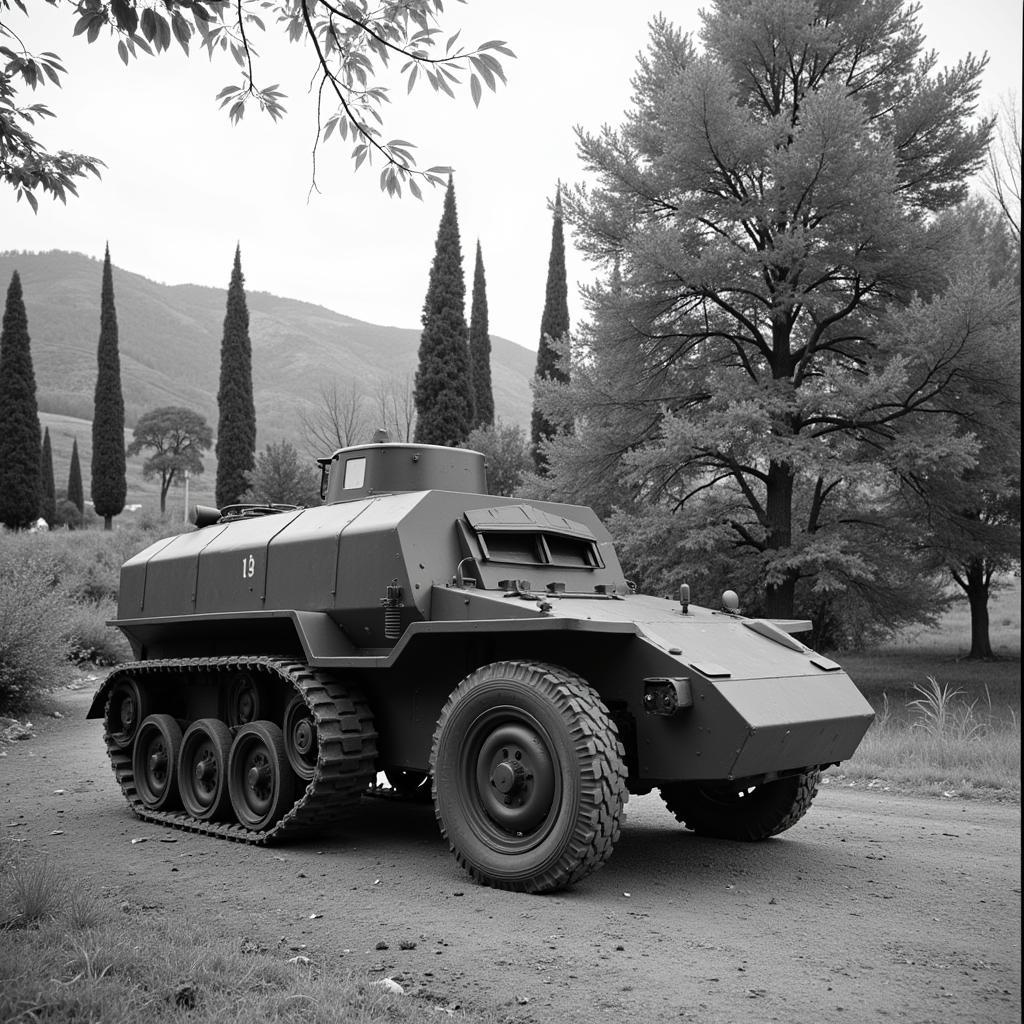Did Staghound Armored Cars See Service in Sicily?
The Staghound armored car, a formidable vehicle of World War II, is often a topic of discussion amongst military enthusiasts. One common question arises: did the Staghound armored car see service in the Sicilian campaign? This article delves into the historical records and deployment of the Staghound to determine its role, if any, during the Allied invasion of Sicily in 1943.
The Staghound’s Development and Intended Role
The Staghound was designed and primarily manufactured in the United States. Initially conceived for use in North Africa, its development was influenced by the British Army’s need for a fast, heavily armed reconnaissance vehicle. The Staghound, with its powerful 37mm gun and .30 caliber machine guns, was ideally suited for scouting and engaging enemy armored cars and light tanks. Its speed and maneuverability were significant advantages in the open desert terrain.
The Sicilian Campaign: A Brief Overview
The Allied invasion of Sicily, codenamed Operation Husky, commenced on July 10, 1943. It was a crucial stepping stone towards liberating Italy from Axis control. The mountainous terrain and narrow roads presented a different challenge compared to the deserts of North Africa. The campaign involved intense fighting between Allied forces, primarily American and British, and the defending German and Italian troops.
Staghounds in Sicily: Separating Fact from Fiction
While the Staghound was envisioned for North Africa and saw widespread service there, its presence in Sicily is less clear. Official records and historical accounts don’t definitively confirm the Staghound’s operational deployment during the Sicilian campaign. It’s possible that a limited number may have been present, but not in significant numbers to impact the overall course of the battle.
 Staghound Armored Car in North Africa
Staghound Armored Car in North Africa
Why Were Staghounds Likely Absent from Sicily?
Several factors likely contributed to the Staghound’s limited, if any, role in Sicily. The terrain, significantly different from the North African deserts, posed challenges to its maneuverability. The mountainous landscape and narrow, winding roads were not conducive to the Staghound’s speed and size. Furthermore, logistical priorities and the availability of other suitable armored vehicles may have influenced deployment decisions.
Alternative Armored Vehicles in Sicily
The Allied forces utilized various other armored vehicles extensively during the Sicilian campaign. These included the American M3 Stuart light tank and the British Humber armored car, both of which were better suited to the challenging terrain and were already readily available in the theater.
Post-Sicily Service: Staghounds in Italy and Beyond
While the Staghound’s presence in Sicily remains uncertain, it played a more significant role in the subsequent Italian campaign and other theaters of World War II. Its speed and firepower proved valuable in the later stages of the war, particularly in reconnaissance and pursuit operations.
Expert Insights: Dr. Emily Carter, Military Historian
“While the Staghound’s design made it a formidable vehicle, its deployment was often dictated by the specific terrain and logistical constraints of each campaign,” explains Dr. Carter. “The Sicilian terrain presented unique challenges, making other armored vehicles more suitable for the initial invasion.”
 Staghound Armored Car in Italy
Staghound Armored Car in Italy
Conclusion: The Staghound’s Elusive Sicilian Service
The question of whether the Staghound armored car saw service in Sicily remains a subject of debate. While historical evidence doesn’t definitively confirm its deployment, it played a vital role in other theaters of World War II. Understanding the Staghound’s intended role and the specific challenges of the Sicilian campaign helps clarify its likely absence from this crucial operation. For further insights, consult additional resources on World War II armored vehicles and the Sicilian campaign.
FAQ
- What was the Staghound armored car designed for? Reconnaissance and engaging light armored vehicles.
- When did the Allied invasion of Sicily take place? July 10, 1943.
- What were the main challenges of the Sicilian terrain? Mountainous landscape and narrow roads.
- What other armored vehicles were used in Sicily? M3 Stuart light tank and Humber armored car.
- Where did the Staghound see significant service? North Africa, Italy (post-Sicily), and other theaters of WWII.
- Was the Staghound effective in its intended role? Yes, its speed and firepower were valuable assets.
- Why might the Staghound have been absent from Sicily? Terrain limitations and logistical priorities.
Need further assistance? Contact us via WhatsApp: +1(641)206-8880, Email: [email protected] or visit our office at 456 Oak Avenue, Miami, FL 33101, USA. Our 24/7 customer service team is ready to help.

